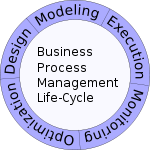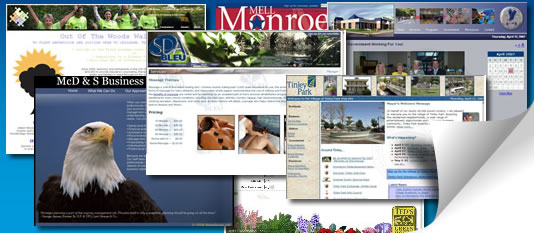WebWorks Intl' Frequently Asked Questions : Business Process Management
Business Process Management (BPM) is a field of management focused on aligning organizations with the wants and needs of clients. It is a holistic management approach that promotes business effectiveness and efficiency while striving for innovation, flexibility, and integration with technology. Business process management attempts to improve processes continuously. It could therefore be described as a "process optimization process."
As a managerial approach, BPM considers processes to be strategic assets of an organization that must be understood, managed, and improved to deliver value added products and services to clients.
Although the initial focus of BPM was on the automation of mechanistic business processes, it has since been extended to integrate human-driven processes in which human interaction takes place in series or parallel with the mechanistic processes.
BPM can be used to understand organizations through expanded views that would not otherwise be available to organize and present. These views include the relationships of processes to each other which, when included in the process model, provide for advanced reporting and analysis that would not otherwise be available.
Because BPM allows organizations to abstract business process from technology infrastructure, it goes far beyond automating business processes (software) or solving business problems (suite). BPM enables business to respond to changing consumer, market, and regulatory demands faster than competitors - creating competitive advantage.
BPM life-cycle
Business process management activities can be grouped into five categories: design, modeling, execution, monitoring, and optimization.

Design
Process Design encompasses both the identification of existing processes and the design of "to-be" processes. Areas of focus include representation of the process flow, the actors within it, alerts & notifications, escalations, Standard Operating Procedures, Service Level Agreements, and task hand-over mechanisms.
Good design reduces the number of problems over the lifetime of the process. Whether or not existing processes are considered, the aim of this step is to ensure that a correct and efficient theoretical design is prepared.
The proposed improvement could be in human-to-human, human-to-system, and system-to-system workflows, and might target regulatory, market, or competitive challenges faced by the businesses.
Modeling
Modeling takes the theoretical design and introduces combinations of variables (e.g., changes in rent or materials costs, which determine how the process might operate under different circumstances).
It also involves running "what-if analysis" on the processes: "What if I have 75% of resources to do the same task?" "What if I want to do the same job for 80% of the current cost?"
Execution
One of the ways to automate processes is to develop or purchase an application that executes the required steps of the process; however, in practice, these applications rarely execute all the steps of the process accurately or completely. Another approach is to use a combination of software and human intervention; however this approach is more complex, making the documentation process difficult.
As a response to these problems, software has been developed that enables the full business process (as developed in the process design activity) to be defined in a computer language which can be directly executed by the computer. The system will either use services in connected applications to perform business operations (e.g. calculating a repayment plan for a loan) or, when a step is too complex to automate, will ask for human input. Compared to either of the previous approaches, directly executing a process definition can be more straightforward and therefore easier to improve. However, automating a process definition requires flexible and comprehensive infrastructure, which typically rules out implementing these systems in a legacy IT environment.
Business rules have been used by systems to provide definitions for governing behavior, and a business rule engine can be used to drive process execution and resolution.
Monitoring
Monitoring encompasses the tracking of individual processes, so that information on their state can be easily seen, and statistics on the performance of one or more processes can be provided. An example of the tracking is being able to determine the state of a customer order(e.g. ordered arrived, awaiting delivery, invoice paid) so that problems in its operation can be identified and corrected.
In addition, this information can be used to work with customers and suppliers to improve their connected processes. Examples of the statistics are the generation of measures on how quickly a customer order is processed or how many orders were processed in the last month. These measures tend to fit into three categories: cycle time, defect rate and productivity.
The degree of monitoring depends on what information the business wants to evaluate and analyze and how business wants it to be monitored, in real-time, near real-time or ad-hoc. Here, business activity monitoring (BAM) extends and expands the monitoring tools in generally provided by BPMS.
Process mining is a collection of methods and tools related to process monitoring. The aim of process mining is to analyze event logs extracted through process monitoring and to compare them with an 'a priori' process model. Process mining allows process analysts to detect discrepancies between the actual process execution and the a priori model as well as to analyze bottlenecks.
Optimization
Process optimization includes retrieving process performance information from modeling or monitoring phase; identifying the potential or actual bottlenecks and the potential opportunities for cost savings or other improvements; and then, applying those enhancements in the design of the process. Overall, this creates greater business value.
From Wikipedia, the free encyclopedia

